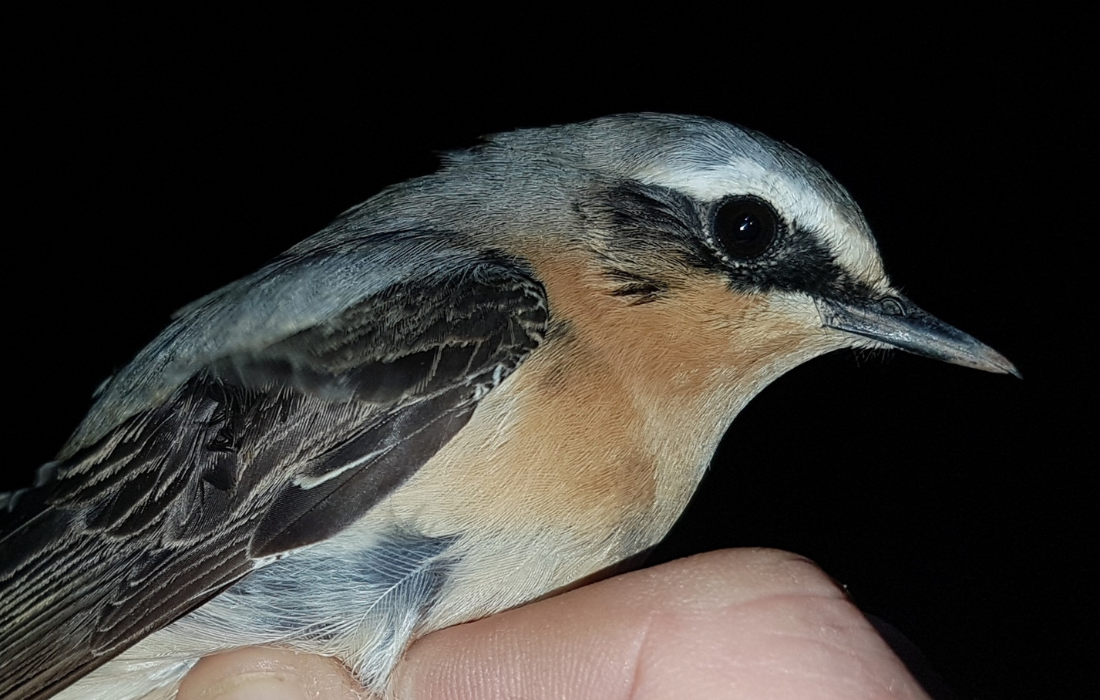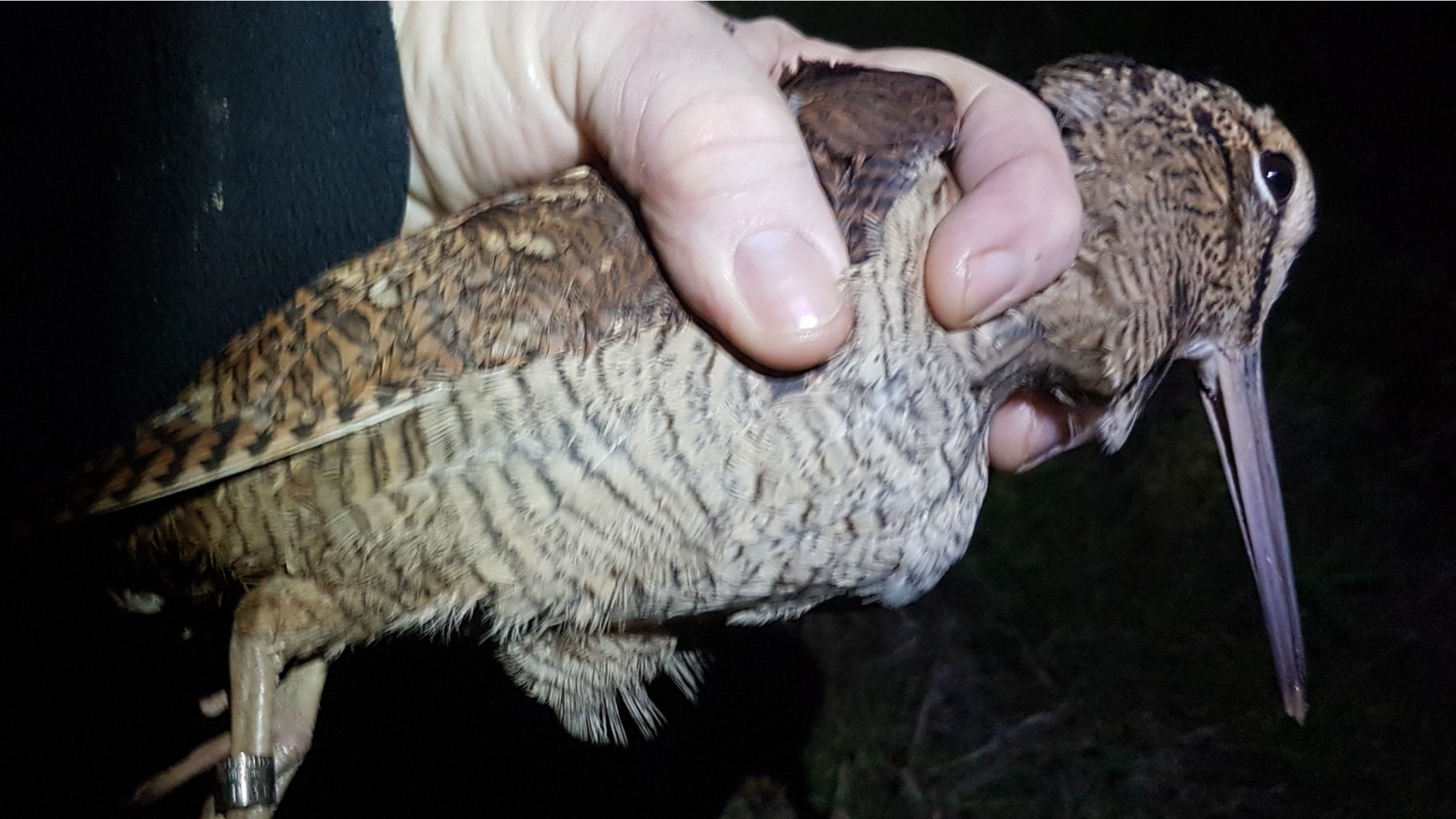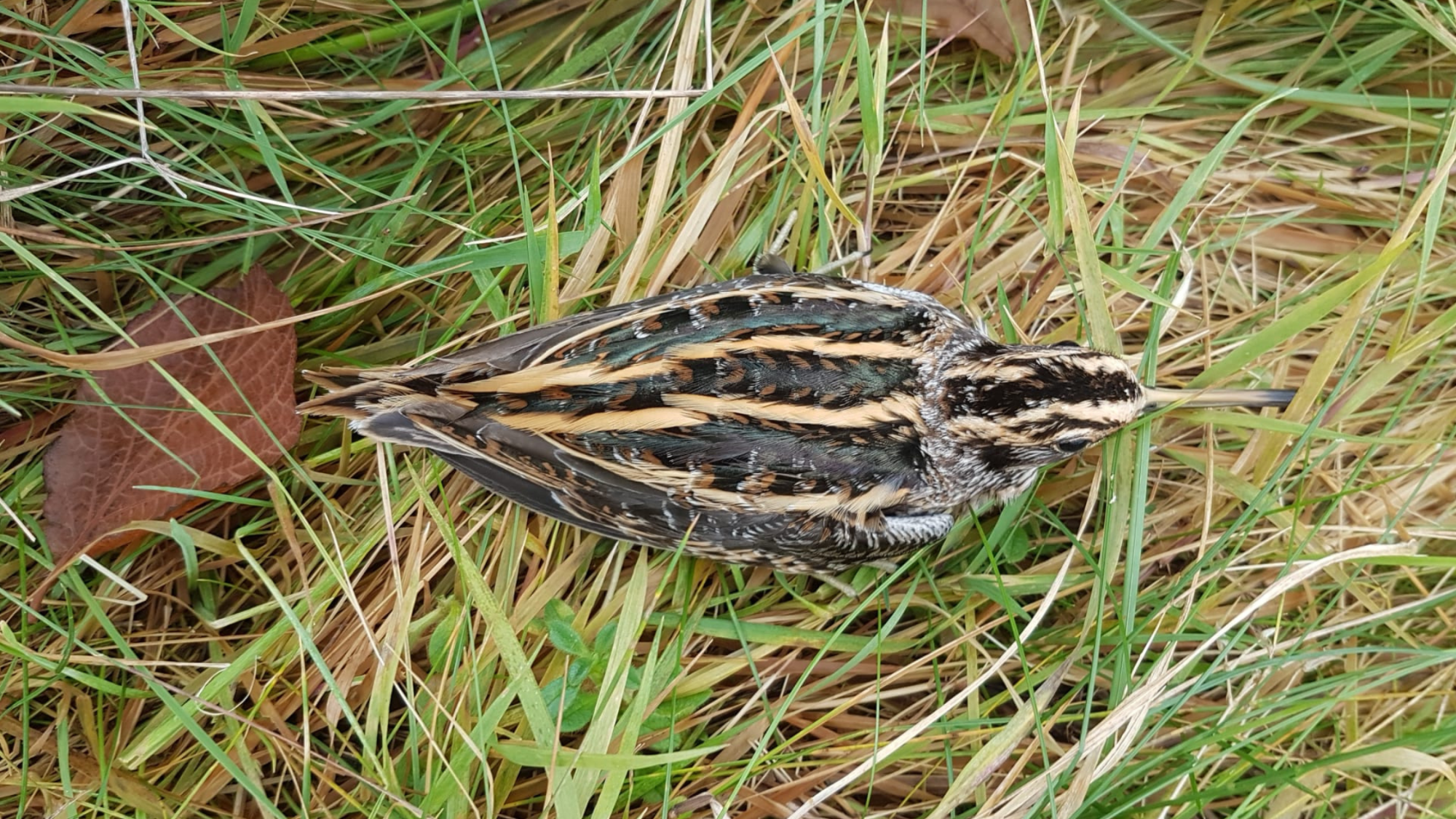
Behind the scenes: Thermal Imaging aiding conservation efforts
Bird ringing enables us to monitor birds in a way that allows us to build a more detailed picture of our birdlife, helping to shape how we create and manage our habitats for birds within the Forest. Bird ringing is usually conducted in the early hours of the morning from dawn with difficult-to-see mist nets the birds fly into.
However, some birds are mainly active during the night or are found in open habitats – so how do we monitor these species which are unlikely to be caught using mist nets, and in a way to keep interference with birds and their habitat to a minimum? Tony Kelly from the Redditch Ringing Group explains.
Starting from the beginning
In the good old days, a few bird ringers would go out with a powerful torch and a hand-held net to try and catch species that are active at night, such as woodcock. This would involve shining a torch across an area and looking to see a reflection of light from the eyes of an unidentified creature (similar to cat’s eyes in our roads). Once a reflection is picked up, the ringer would slowly and quietly approach, keeping the bright light fixed on the target. Often, the target will sit as if mesmerised by the light and, as the ringer gets closer, will be able to identify if it is indeed a bird. To capture, the hand-held net is then dropped over the bird. This has enabled ringers to ring a number of species that are otherwise difficult to catch.

Technology shining a new light on conservation efforts
Thermal imagers (TI) of variable quality have been available for many years and are generally quite expensive. It is only in recent times that they have become more affordable, and bird ringers have found them to be a very useful tool. Nowadays, rather than randomly shine a torch across a field, a ringer will first scan an area looking through the viewfinder of a TI looking for any heat sources. Depending on the quality of the TI, it may be possible to identify if the heat source is either a bird or mammal.
Once a bird is identified, it is back to traditional methods – the torch is switched on and target stealthily approached, making little noise, and hopefully successfully dazzling and catching the bird. Ambient light from a nearby town can make catching difficult, but there are many locations where this is not an issue in the Forest. It is important to note that we do not disturb flocks of birds! Although these are incredible to witness on the viewfinder and give an indication of how many birds are laying low in the grasslands.
In the Forest, the use of Thermal imagers (TI) has resulted in the ringing of many woodcock, skylark, fieldfare, meadow pipit and jack snipe. The latter species is very interesting because the TI can also be used during daylight, as they are incredibly well camouflaged and often stay very still when approached, relying on their cryptic camouflage.
Sometimes due to the assistance of TI during the day, particularly in the winter months and early mornings, it can be a useful tool to help find ‘blobs’ of heat which can then be investigated with binoculars or a scope to identify the species. This has been particularly useful in the summer of 2024 to identify the Grasshopper Warbler before dawn. Over a period of time we will build up a picture of which habitats are suitable to hold populations of different species of birds. This information may be used to aid future land management practices.

The importance of bird ringing
The Redditch Ringing Group spends hundreds of hours volunteering each year ringing birds.
All ringers are gathering data and submitting records which are available for anyone to look back on and identify long-term trends.
Every ring we use has a unique ID and we take the same basic biometrics for each bird – species, age and sex, wing measurement and weight, fat, and muscle. This information goes into a database for the British Trust for Ornithology to collate and analyse.
Constant monitoring over time is important, as you build up knowledge of what species are where, and whether their numbers are increasing or decreasing. This is exactly what we are doing in the Heart of England Forest.
Without ringers and citizen science programmes, we would not be able to build this picture. People have been ringing now for 100 plus years, so this amount of data starts to tell you a lot. There is no bias, just data collection, which gives it integrity.

How you can help birds in the Forest
Monitoring, maintaining, managing and enhancing habits for birds to nest, feed and thrive in is part of our ongoing work at the charity.
The Redditch Ringing Group have recorded 11,562 individual birds in just over five years and 12 of those have been red list species; these are birds which have declined significantly in range and/or abundance. The marsh tit, lesser redpoll and greenfinch are a few to name but are recorded in healthy numbers in the Forest. We’d like to see them continue to thrive with your help.
By becoming a Friend of the Forest your monthly donation of £5, or more if you can, to help us protect, conserve and grow the Forest.



